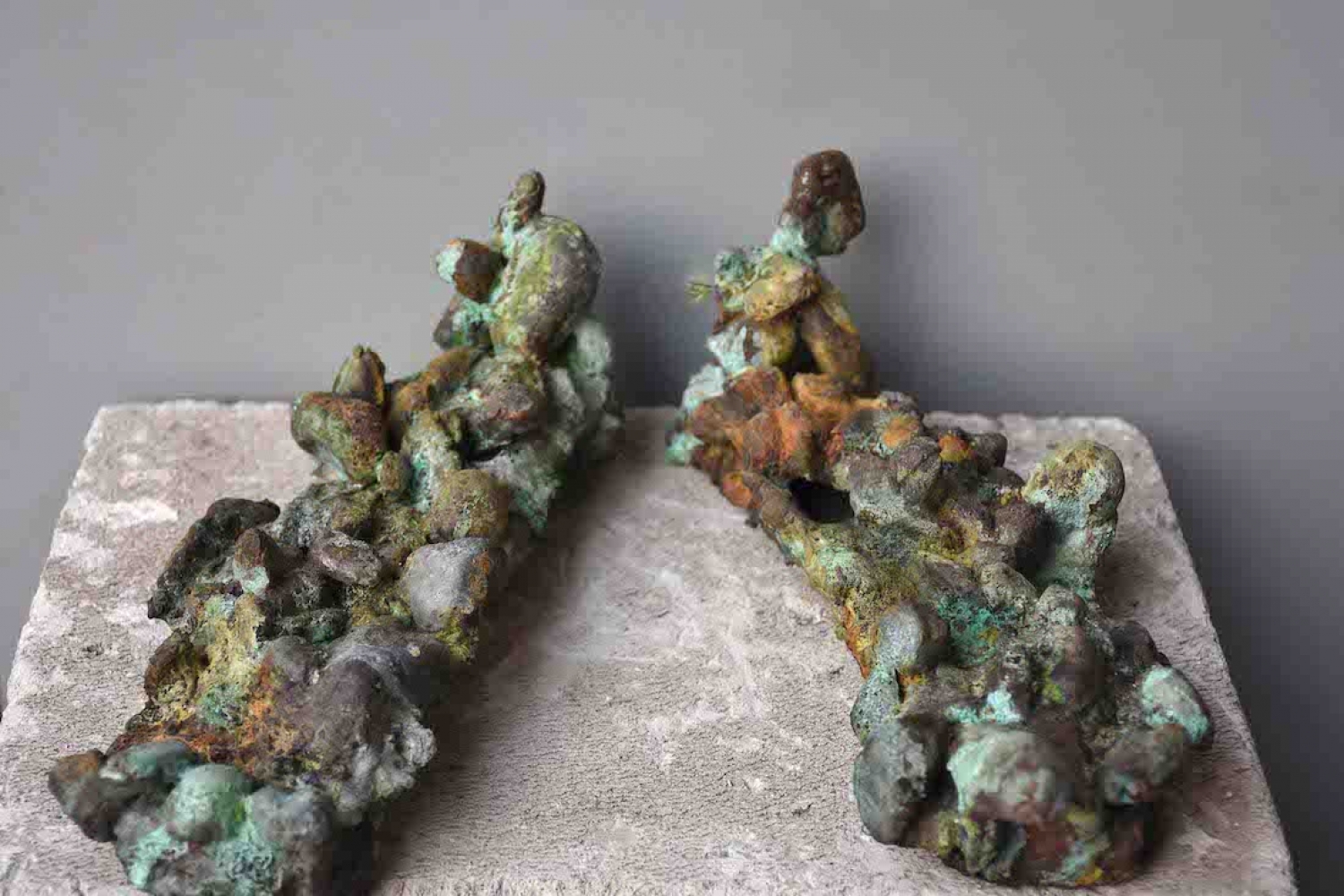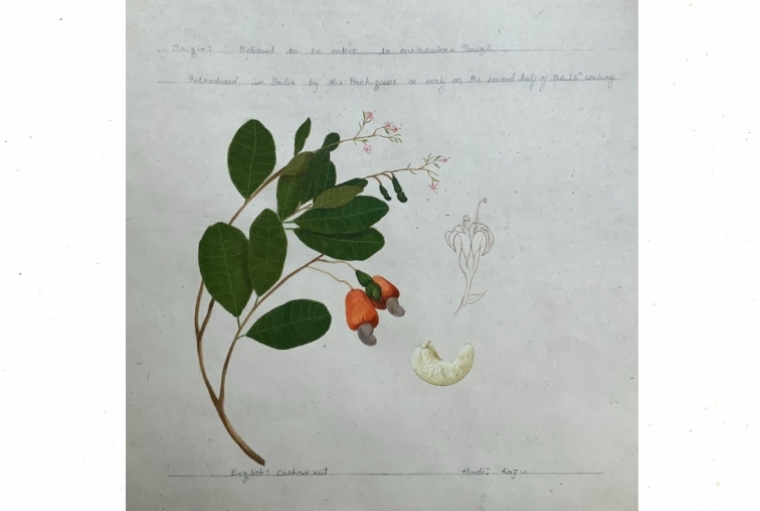
Radhika Agarwala - On The Shores Of Time I, cast bronze and patina, right foot - 4 x 3.5 x 11 inches, left foot - 4 x 3 x 10 inches, 2020, plinth - 10 x 30 x 13 inches.

Radhika Agarwala - On The Shores Of Time I, cast bronze and patina, right foot - 4 x 3.5 x 11 inches, left foot - 4 x 3 x 10 inches, 2020, plinth - 10 x 30 x 13 inches.
Artist Gopa Trivedi’s proposed work for the show, questions the parameters for being Indian. It specifically references the Colonial practices of documenting and studying local Indian plants by creating visual albums. These commissions for illustrations emerged initially (towards the end of 18th century) due to the specific need of identification of the medicinal and economic plants but later developed into a more elaborate process of documentation for purely botanical interest. For the show she is showcasing, 20-25 illustrations, part of a long-term project where she intends to create a visual album of plants that have been introduced to India through various traders and waves of Invasions over centuries. Manjot Kaur’s drawings, paintings, and time-based media summon the mystical, scientific, and absurd to draw attention to current socio-political predicaments and the sovereignty of ecology.
Sugata Ray holds the Sarah Kailath Chair of India Studies, is the Associate Professor at The History of Art Department, Department of South & Southeast Asian Studies and the Interim Director, Institute for South Asia Studies, University of California, Berkeley. Borrowed imagery and text bridge the past and present, which traverse across speculative fiction, visual storytelling and myth-making, to explore the interconnection between humans and more than humans. With an attempt to decolonise both women's bodies and nature, she refers to archaic cultural symbols of fertility in order to reflect on present day reproduction rights of various species of flora and fauna. There emerges a conceptual framework of natureculture, which proposes different ways of thinking about agency and power, difference and sociality, ontology and epistemology.
Priyanka D’Souza uses satire and fiction as a tool to subvert and redress lacunae and exaggerations in mainstream history. She is interested in paradigms of truth and wonder and so her academic writing is centered around monsters and the aja’ib (strange/ unbelievable), particularly in imaginings of borderlands of nation-empires, and as applied to anomalous/disabled bodies.

Gopa Trivedi Invaders Gouache on wasli 12 x 12 in 2022 10
Radhika Agarwala’s practice finds her exploring concepts of fragility and permanence - using material from both nature and civilization. Uprooted trees and branches share space with paper, epoxy-resin, bronze and concrete. Found objects - both organic and inorganic, are cast with substances they would not normally interact with. Whatever the material, or the distortion or hybridization forced on it, in the end her work asks a simple question – “Who would win if Nature starts to fight back?” and the answer to that is a quick – “Not us”. Often rich in mythical references, her drawings, sculptures and installations deal with the fossilization of memory. Her practice draws attention to a newly discovered environment and personal journeys of being uprooted from one to another unknown territory. She approaches cities as forests-turn epileptic wastelands and landscapes with distorted eco-systems. Man’s constantly growing hunger for “productive space” has resulted in mass deforestation and the disappearance of hundreds of thousands of species of plants, animals and insects over the decades - Radhika’s work is testament to this loss. She draws inspiration and collects samples of nature from every city she lives in, incorporating them into her practice.
Wardha Shabbir pays a collective homage to the struggle that is quintessential to women’s lives. Taking forward the technique learnt during her years of practicing Miniature Painting, influenced by the gardens from her surroundings and contemporary architecture, the organic compositions portray a plethora of women’s experiences. The abundance of growth, morphing into elaborate motifs emulates the unfathomable contours of female imagination. Vivid hues illustrate the strength and vitality of feminine emotion.
Within these paradisiacal visuals she has carefully embedded symbols of loss and despair, but also hope and survival. There is infinitude in a person’s isolated journey; in following a path that has an end in itself. A path that multiplies, wavers, even breaks but reconciles over and over again. Etiolating flora amongst flourishing growth represents death in the path, as it is through death that one learns to live again. This contradictory state of awareness, living while dying at the one and the same time, paves the journey to self-realization.
Date 06-06-2022